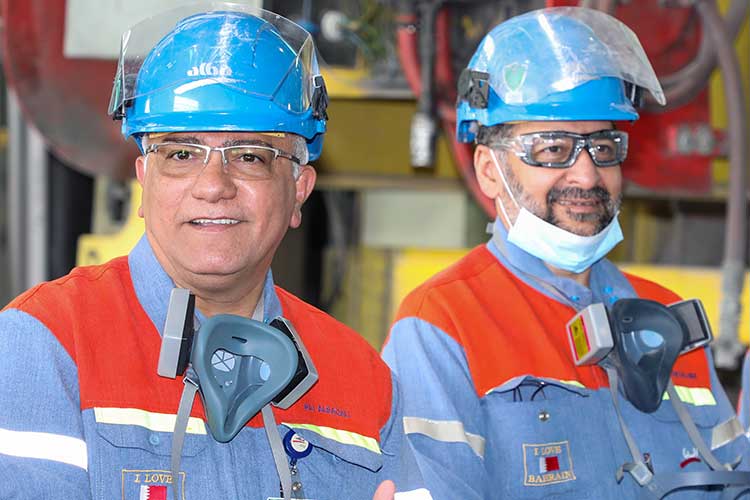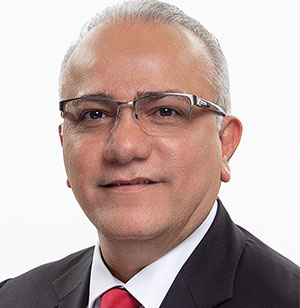The 2023 CEOs Who “Get It”

Ali Al-Baqali
CEO
Aluminium Bahrain B.S.C.
Kingdom of Bahrain

Aluminium Bahrain (Alba) produces high-quality products in the form of standard and value-added products, which are exported to more than 240 global customers through its sales offices in Europe, Asia and a subsidiary office in the United States. The company has more than 3,100 employees.
Describe your personal journey to becoming a CEO who “gets it.” What experiences or lessons brought you to where you are now?

In the past 15 years, I have worked closely with two different CEOs as a member of the senior management. One chose to focus on cost savings over safety, thus resulting in devastating outcomes in many arenas. My predecessor chose to focus on safety rather than cost, and that has yielded higher safety milestones that were never achieved before, in addition to other milestones. At the time of my assignment, I choose to cultivate the same safety approach that I witnessed while being the deputy CEO, but it was again too challenging, as everyone used to work toward achieving safety results rather than focusing on doing everything right.
This past experience made me believe that safety is not a destination, but a journey that never ends. My biggest nightmare was the thought of losing a person, which drove me to do more every day, every hour and every minute to ensure appropriate systems are in place, maintained and followed to safeguard all stakeholders in Alba through a solid and unbreakable safety culture.
What is the biggest obstacle to safety at your organization? How do you work to overcome it?
Alba comprises 3,100-plus full-time employees and 4,000 contractor workers working in the vicinity of 1.2-square miles, with the majority doing manual and interactive work. This scale of people – most of whom are working with machinery and equipment – needs vivid systems, supervision, procedures, knowledge, skills and much more, coupled with safety culture being consistent to all individuals who are working in and around this organization. This is what we do on daily basis! Building a sound safety and health management system is one of the fundamental areas, alongside having clear objectives and targets.
Therefore, building robust systems and empowering employees are key to overcoming the obstacle of constructing a health and sound safety culture. It is worth mentioning that our first safety principle states that “ownership of safety and environment is everyone’s responsibility.”
Why is safety a core value at your organization?
Safety excellence has been put at the top of Alba’s strategy. I have seen the difference between poor and good safety performance, and how it can affect the company – whether it is on the operational and financial fronts or employee morale. I believe that one injury is too many. Our aim is to produce aluminium safely, and I can confidently say that we have been achieving zero lost time injuries in the past few years. These results clearly demonstrate that when you get safety right, everything else will be right!
How do you instill a sense of safety in employees on an ongoing basis?
The shortest answer would be maintaining a positive safety culture and constantly being visible (as a management team) on the shop floor. We endeavour promoting positive safety culture, rewarding good ideas and excellent safety performance, recognizing individuals (full-time employees and/or contractor workers), conducting regular safety inspections, and organizing comprehensive and interesting safety campaigns on a regular basis to keep the safety momentum running – all the while reviewing and auditing our safety policies and procedures as well as monitoring performance at regular intervals, to ensure we have the right systems at the workplace.
We also take any safety incidents, such as damages, near misses, etc., and use them to extend our knowledge and skill requirements while providing the best remedial management actions to prevent their reoccurrences in the future.
How does your organization measure safety? What are the leading indicators that show you how safe your organization is, and where do you see room for improvement?
At Alba, there are many leading and lagging indicators that we monitor closely to give us the pace of our current safety performance. We monitor inspection reports, behavioral observations, incident trends with all categories, employee safety suggestions, the number of meetings we conduct related to health and safety, the outcome of the audits, and much more. The most prominent leading indicator is the number of employees involved in all of our programs.
Basically, the secret of a successful health and safety management system is finding the right balance between the top-down and bottom-up safety approach. Employee involvement caters for 50% of the success of any health and safety management system, thus giving employees a chance to drive the safety culture. At first glance, this might sound scary for the top management in any organization, but the fact remains that employee involvement will help in adopting the management programs, as well as the culture that we strive to achieve.
What role does off-the-job safety play in your organization’s overall safety program? What types of off-the-job safety and health programs does your organization offer to employees?
Our health and safety programs are built on engaging employees, contractor workers and the community. We continuously promote the philosophy of coming to work safely, working safely, going home safely and staying safe at home! Moreover, we have a dedicated committee (community service) that is designed to promote Alba and its strategies in the community. The community service team has done an extensive number of campaigns over the past few years, such as cleaning public beaches, visiting children and older adults in hospitals, and promoting traffic safety in collaboration with the Directorate of Traffic here in Bahrain.
We have encouraged employees to produce safety videos jointly with their families. Those videos were a great contribution and impacted all members in the organization. In fact, our workforce has a great deal of talent that has been presented widely in the past few years, thanks to the bottom-up approach that was adopted by management.
What have you done to support employee mental health and well-being within your organization?
Although we have come a long way in nurturing a sound health and safety management system, and hence a positive health and safety culture, we believe that safety is a journey and we should constantly nurture it! Indeed, employee mental health and well-being have surfaced during the past few years, as going through the COVID-19 pandemic has brought a new challenge. We run a program that is dedicated to cultivating the well-being of employees at the workplace that is part of our environmental, safety and health policy. We aim to develop more such programs that target employee mental health, knowing that this is the need of the hour, especially post COVID-19.
Post a comment to this article
Safety+Health welcomes comments that promote respectful dialogue. Please stay on topic. Comments that contain personal attacks, profanity or abusive language – or those aggressively promoting products or services – will be removed. We reserve the right to determine which comments violate our comment policy. (Anonymous comments are welcome; merely skip the “name” field in the comment box. An email address is required but will not be included with your comment.)


